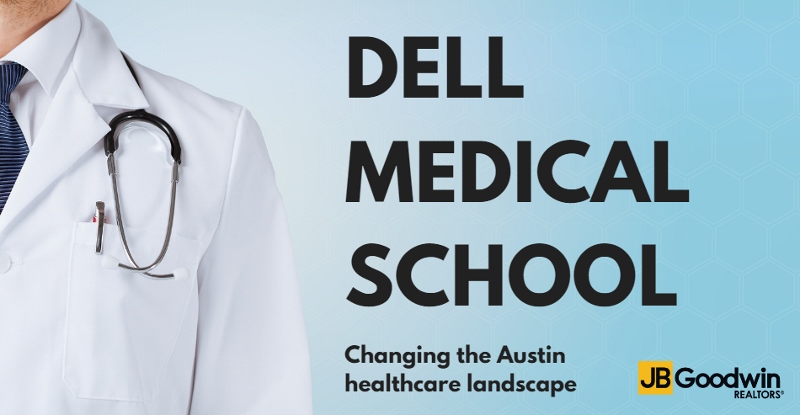
The Dell Medical School is set to revolutionize healthcare in Austin, and Central Texas as a whole. With initial plans to locate a medical campus at UT Austin approved in 2008, the plan was finally brought to life when Travis County voters approved allocating $35 million of annual taxpayer money for the new medical school. Thanks to additional funding from the University of Texas and $50 million in funding from the Michael and Susan Dell Foundation, after whom the school was named, construction began on the new medical school in April 2014.
June 2016 marked the opening of the project's first building, making the Dell Medical School the first medical school in the country to be built completely from scratch at a top tier research university since Michigan State opened a new med school back in 1956.
But what exactly makes this project so significant to the city of Austin?
The Dell Medical School's Impact
The Dell Medical School is already having a major impact on the community. One of the main benefits of the program will be the increased availability of health professionals across the Central Texas area. When the medical school was approved in 2012, there were 209 medical residents operating in the Austin area. At present, there are 271 residents, who practice under the supervision and guidance of the school's faculty physicians, primarily funded by the Seton Healthcare Family. This number is projected to grow to 317 residents by 2020, as The Texas Higher Education Coordinating Board recently approved $825,000 in grants that will provide funding for 11 additional residency positions, including 4 new surgical residency positions.
Research suggests that 80% of medical students who remain in one state for the entirety of their medical education end up taking up practice in the same state. This means the Dell Medical School should result in a significant influx of practising physicians across the city of Austin, and the entire state of Texas.
Innovation at the Dell Medical School
With the first class of 50 students having entered in summer of 2016, we're already seeing major changes in the traditional approach to medical school. There's no previous curriculum precedent to abide by, so the school's faculty are free to design a modern, innovate program that pushes the boundaries of learning. Whereas typical medical schools begin with two years of science-focused instruction, the Dell Medical School has opted to put students through only one year of science training.
The goal is to expose students to real-world challenges earlier on in the process, giving them more time to problem solve, interact with patients, and focus on innovation in the presence of their instructors and mentors. This means less lecture and classroom time, and more time spent at patients' bedsides.
As part of their education, med students will be expected to undertake projects that make significant impact on the local community. Students will focus on local issues, such as fighting obesity in Austin.
The medical facilities themselves are expected to be state-of-the-art as well. A $295-million teaching hospital, the Dell Seton Medical Center at the University of Texas, is set to open in 2017. This 211-bed teaching hospital, replacing the University Medical Center Brackenridge, will push the boundaries of innovation. Instead of waiting rooms, patients will be assigned to private rooms with impressive touch-screen to access medical records, insurance options, and more.
Dell Medical School Buildings
Construction of the Health Learning Building was completed in the summer of 2016, but that's only the start of the project. Here's a preview of the buildings coming to the new medical campus:
- Health Learning Building (completed 2016): features an oak tree-filled courtyard, eateries, interactive auditorium, teaching labs, and other learning spaces
- Health Transformation Building (Summer 2017): features doctors' offices, an ambulatory surgical center, demonstration clinics, and a bridge to the Health Discovery Building
- Health Discovery Building (Summer 2017): features medical research facilities, imaging center, plaza, and lecture hall
Other developments include a large parking garage, the aforementioned Dell Seton Medical Center, and the courtyard centered around Waller Creek. The campus is located at the northeast corner of E. 15th Street and Trinity Street, extending east past Red River Street.
Interested in learning more about development in Austin, or have questions about Austin real estate? Contact JB Goodwin REALTORS® today and we'll answer any questions you may have!
Posted by Mary Ann Castro on
Leave A Comment